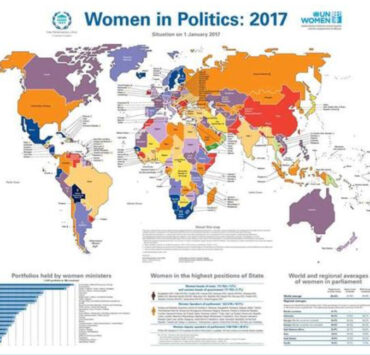
By Kalpana Sharma
For many people in the rest of India, or the “mainland” as people in the Northeast call it, the current standoff in Nagaland over 33% reservation for women in urban local bodies is puzzling. There is precious little news about Nagaland on most days. And when you suddenly read about police firing, deaths, curfew, arson and bandhs taking place not over the continuing demand for a greater Nagaland, or Nagalim, but over reservation of seats for women in municipal bodies, you have every reason to be puzzled.
This reminds us of our abysmal lack of knowledge about a vast area of India that we dismiss as “the Northeast”. The only news we get from the region is either about insurgency, or about natural disasters. We know next to nothing about the lives of people — how ordinary people live, what they eat, their sources of livelihood, whether they have adequate water, electricity, or health care. Furthermore, there is an assumption that women in the entire region are better off than their counterparts elsewhere because people have heard, vaguely, that one tribe in one state in northeast India, the Khasis in Meghalaya, has a matrilineal society.
It has to be said, though, that at least this time, some mainstream newspapers have taken the trouble to explain what is happening in Nagaland such as in this piece in Indian Express. However, the article misses out the main point made in the article mentioned below about the centrality of women’s fight for justice and equal rights.
Few clearer pieces have been written about the issues underlying the current crisis in Nagaland than this one by Monalisa Changkija, editor of Nagaland Page, in the Indian Express.
Monalisa is a writer, poet, journalist and the only woman editor of a daily newspaper in Nagaland. She lives in Dimapur. A beautifully laid out garden leads to her tasteful home that is full of paintings and books. She has always been outspoken and her newspaper is known for its independent stand on a number of tricky issues in a state where journalists have to tread carefully between governments, state and central, on one side, and the different militant groups on the other.
The key point she makes in her article is that Nagaland’s patriarchal traditional society fears the forces of change that more women in institutions of governance would inevitably unleash. She writes:
“…the fear is that women would finally have a say in how resources are used and shared in towns, which could then spill over to villages. So far, only men are privy to the utilisation and sharing of resources allotted by the Central and state governments, as also available resources of clan and tribe land ownership. With political powers come economic powers, and with economic powers, political power is reinforced and consolidated, all of which has the potential to disrupt the status quo in Naga society that has marginalised women politically and economically.”
In fact, so much of the reporting on Nagaland in mainstream media is about politics and conflict, that practically nothing is known about the long-standing battle of the women of the state for equal rights. In a piece I wrote in Scroll.in last year after spending a couple of weeks in Nagaland, I had observed:
“At first glance, Naga women do not appear oppressed. You meet strong, articulate women, well-known writers, poets, academics and activists.
You also see women doing backbreaking work in the fields, carrying heavy loads of firewood, cooking, cleaning, weaving or selling vegetables and fruits in markets and by the roadside.
Yet, a Naga woman cannot call the field in which she works her own, or lay claim to house she manages or even her kitchen garden. If it is ancestral property, she is not entitled to inherit it.
The only exception is acquired property – parents can gift their daughters land. But after her death, that land will not go to her heirs; it will be returned to her clan.
For the women in Nagaland, then, the battle is two-pronged – for representation in institutions of governance and for the right to inheritance.”
When I met and spoke to Monalisa and other women in Nagaland, the municipal elections were still some time away. Yet, the issue of 33% reservation for women was already a subject of intense debate.
On the surface, the debate is about the constitutionally guaranteed rights of the Nagas to preserve their traditional structures of governance. But essentially, as Monalisa explains, it is about property and economic and political rights of women. Once women have a say in politics — it has been repeatedly pointed out that not a single woman has been elected to the Nagaland assembly since it became a state in 1963 — they will also demand greater economic rights, including the right to inherit ancestral property. That will upset the “tradition” that men have guarded so assiduously all these years. As an editorial in the Economic and Political Weekly pointed out:
Their struggle also highlights the reluctance of all men, tribal or otherwise, to share with women the power, and one might add the profits, of holding office.
Should women in the rest of India reach out and express solidarity with Naga women? This is something Ruben Banerjee raises in his column in Hindustan Times. He says that “the lack of outrage is by itself outrageous” and suggests that part of the reason is Nagaland’s geography and demography and its physical distance from Delhi. He argues that this “collective indifference has left Naga women hostage to the will of their men.”
I would argue that the best form of solidarity in this instance is to ensure that the voices of Naga women like Monalisa are heard in the Indian media, that the perspective they provide is read and understood. Additionally, we must make a more vigorous effort to ensure that there is greater and substantially diverse coverage of events and developments in Nagaland and the other states in the region at all times, and not only when there is a crisis.




